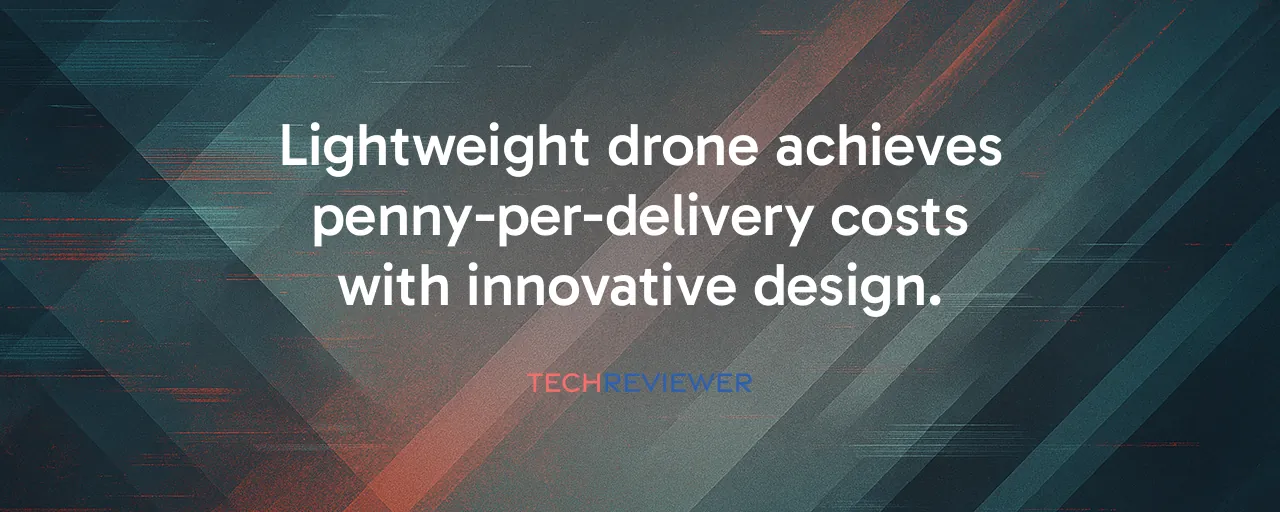A New Spin on Drone Delivery
Airbound, a startup from India, is shaking up how we think about getting packages from point A to point B. Founded in 2020 by a then-15-year-old Naman Pushp, the company just secured $8.65 million in seed funding to push its vision of deliveries that cost just a penny. The secret? A drone called the TRT that's lighter than a laptop and flies like a plane after launching like a rocket. Unlike the clunky quadcopters buzzing around today, Airbound's design uses a sleek, blended-wing-body shape with only two propellers, slashing energy costs by up to 20 times compared to traditional methods.
This isn't just about cheaper deliveries. Airbound's approach could change how critical supplies, like medical equipment, reach people fast, especially in places where roads are more of a suggestion than a reality. The company's already testing this with Narayana Health, India's fourth-largest hospital system, in a pilot program launched in Bengaluru in October 2025. If it works, it could mean faster, more reliable access to life-saving supplies.
Why Weight Matters
Most delivery drones are heavyweights, needing four kilograms to lift just one kilogram of cargo. That's like driving a truck to deliver a single pizza. Airbound's TRT flips this, carrying nearly two-thirds of its own weight thanks to a carbon fiber frame that weighs just 400 grams. This lightweight build, paired with a tail-sitter design that takes off vertically and cruises horizontally, cuts energy use to about 10 paise per kilometer, a fraction of the 2 rupees per kilometer for India's electric two-wheelers.
The efficiency comes from aerodynamics. By merging the body and wings into one smooth shape, the TRT glides with less drag, needing less power to stay aloft. Compare that to standard drones, which burn energy hovering like over-caffeinated hummingbirds. Airbound's focus on weight and airflow draws inspiration from aerospace giants like Boeing and NASA, who've long explored blended-wing designs for bigger planes. The result? A drone that could make delivering a bandage or a burger dirt-cheap.
Learning From the Field: Airbound vs. Zipline
Airbound's pilot with Narayana Health offers a real-world test, delivering medical supplies across Bengaluru. It's a focused start, targeting hospitals where every minute counts. Narayana Health, with over 20 hospitals and 4,000 doctors, wants to cut diagnostic delays and reach remote areas. Early results are promising, but scaling up means tackling urban airspace and weather challenges.
Zipline's work in Rwanda provides a useful comparison. Since 2016, Zipline has flown over 13,000 missions, delivering 35 percent of Rwanda's blood supply. Their drones carry 4.4 pounds over 100 miles, proving drones can handle critical logistics in tough settings. But Zipline's heavier quadcopters use more energy than Airbound's TRT, and their operations thrive in Rwanda's less restrictive skies. Airbound's lighter design could offer an edge in cost, but India's denser cities and stricter rules, like the 2025 Civil Drone Bill, pose hurdles Zipline didn't face. The lesson? Lightweight designs shine in efficiency, but scaling requires regulatory finesse and robust infrastructure.
The Roadblocks to Penny Deliveries
Airbound's one-cent delivery goal is bold, but it's not a done deal. India's draft Civil Drone Bill, released in September 2025, brings tougher rules, including jail time for violations. Navigating urban airspace, dodging crosswinds, and landing precisely are tricky for tail-sitter drones like the TRT. Batteries also limit range to 10-20 kilometers, fine for short hops but not for sprawling cities. And while drones could cut emissions compared to gas-powered trucks, India's coal-heavy grid tempers those green benefits.
Communities have their own worries. Drones buzzing overhead can be annoying, and cameras needed for navigation spark privacy fears. Zipline's U.S. operations with Wing Aviation faced noise complaints, a hint of what Airbound might encounter. Then there's the economic angle: automating deliveries could shrink jobs for India's army of two-wheeler couriers. Balancing these concerns with the promise of faster, cheaper deliveries will shape whether Airbound's vision takes flight.
What's Next for Airbound and Beyond
Airbound's $8.65 million funding, backed by heavyweights like Lachy Groom and leaders from Tesla and SpaceX, signals strong belief in its tech. The company's pivot to medical logistics first makes sense; hospitals will pay for speed and reliability while Airbound refines its system. If the Narayana Health pilot succeeds, expect e-commerce giants like Zomato or Swiggy to take notice as India's last-mile delivery market, worth $6.5 billion in 2024, surges toward $24 billion by 2033.
The bigger picture is exciting. Airbound's lightweight approach could inspire others, pushing drones toward broader uses like rural deliveries or emergency response. Partnerships with hospitals, regulators, and even urban planners could help build the infrastructure needed for scale. While challenges like regulations and public acceptance loom, Airbound's blend of youthful ambition and aerospace savvy makes it a startup to watch.
